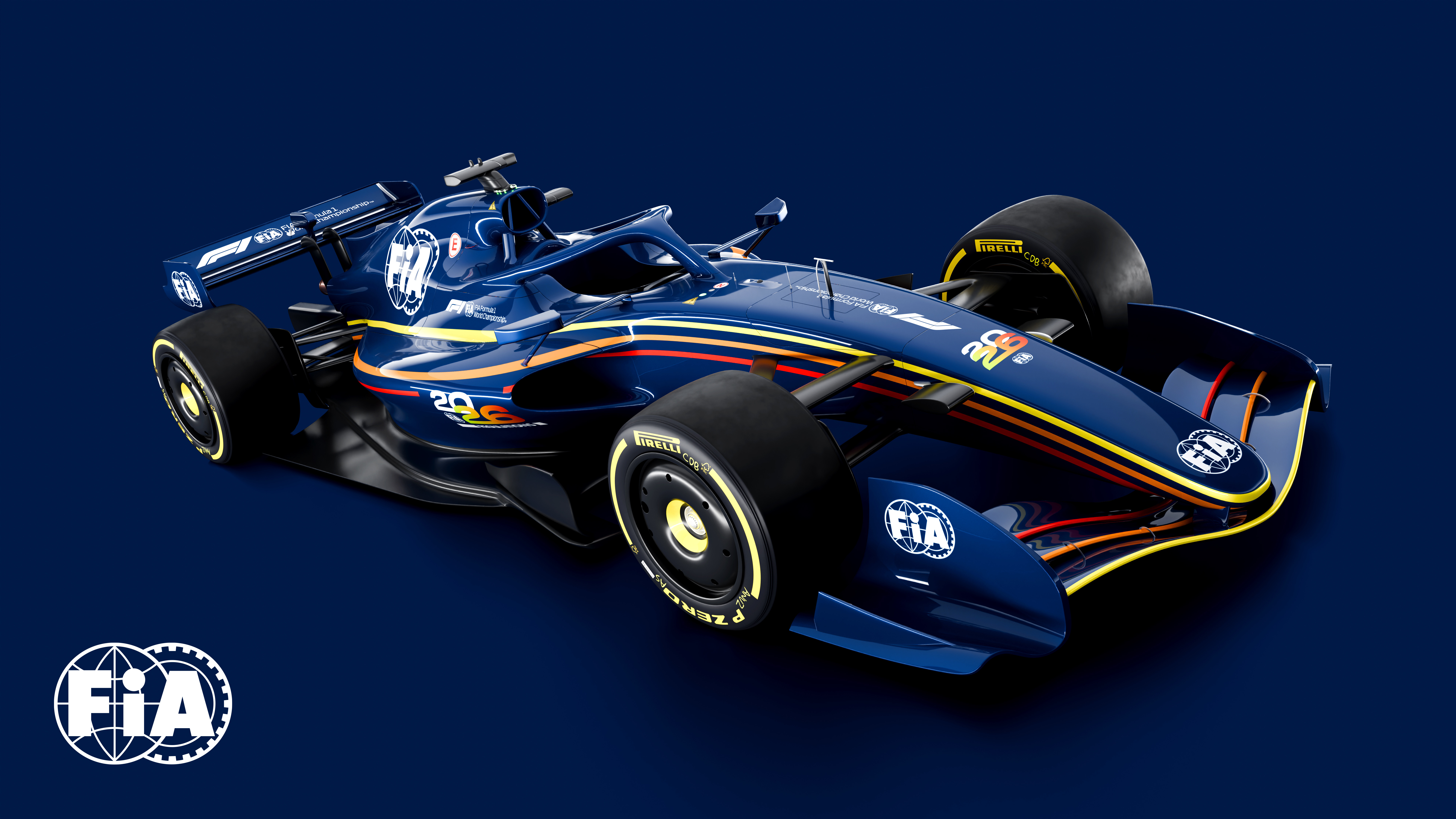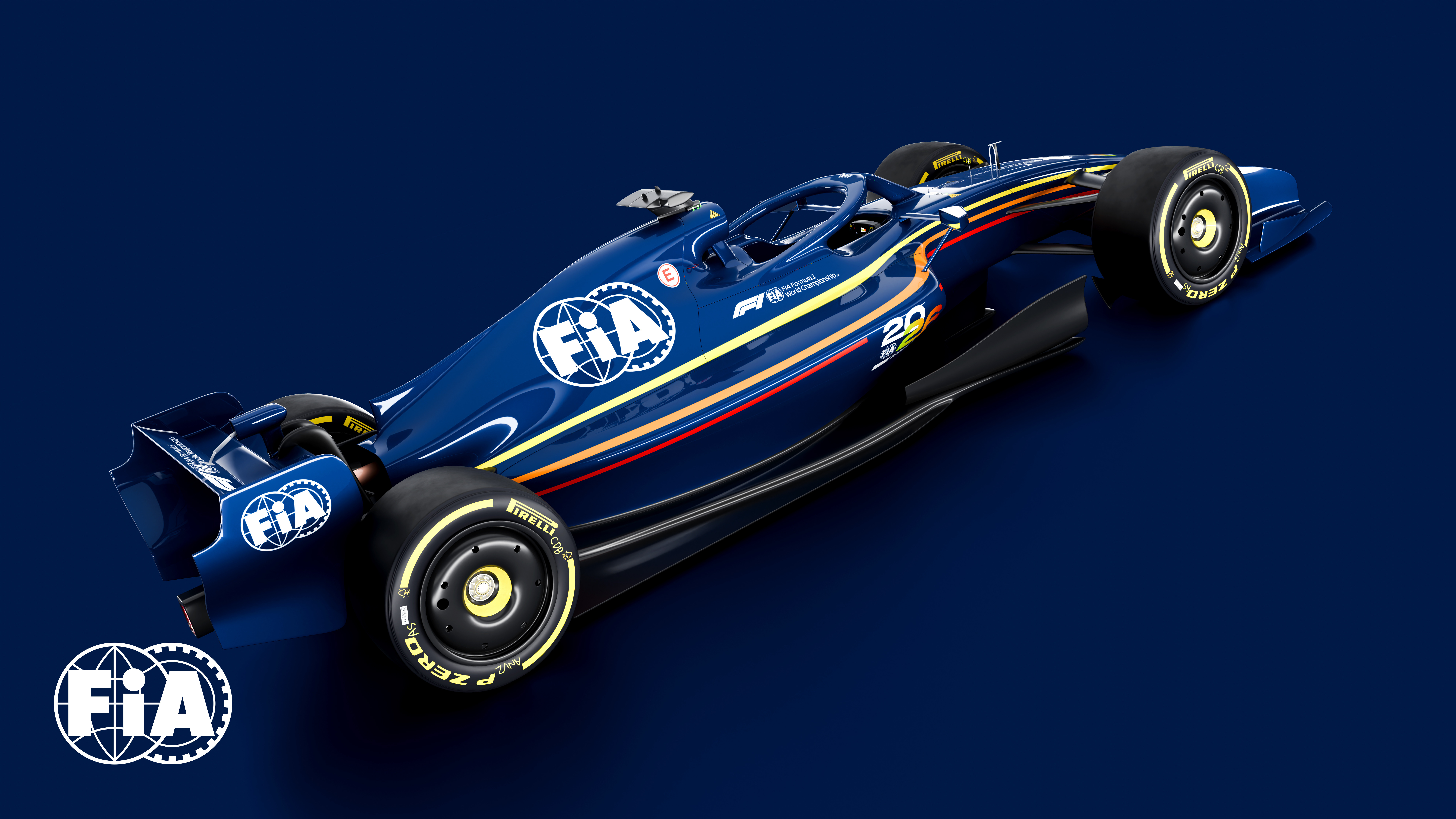A new era of competition: FIA unveils forward-looking Formula 1 regulations for 2026 and beyond.
– The ‘Nimble Car’ concept, which is at the heart of the 2026 technical regulations, aims for improved raceability and closer racing.
– The 2026 model is 30 kg lighter than the current F1 car, improving efficiency and handling.
– The redesigned power unit builds on the world’s most efficient engine with nearly 300% more battery power and also separates internal combustion and power.
– Active aerodynamics suited to the energy management requirements of new power units
– Increased overtaking opportunities with a new manual override mode that provides more power deployment to the next vehicle.
– A record number of six powertrain manufacturers with Ferrari, Mercedes, Alpine, Honda, Audi and Red Bull Ford Powertrains committed to F1 from 2026
– 2026 cars running on 100% sustainable fuel
– Improved safety through more robust structure and more rigorous testing
The Federation Internationale de l’Automobile (FIA) today announced the much-anticipated technical regulations that will define the sport from 2026, ushering in a more competitive, safer and sustainable future for the FIA Formula One World Championship.
Details of the new regulations, developed in consultation with the FIA Formula 1 Technical Working Group and formalized in collaboration with Formula 1, the sport’s ten teams, OEMs and powertrain manufacturers, were revealed in Montreal ahead of this weekend’s 2024 FIA Formula 1 Canadian competition. . grand prix. The 2026 regulations are now expected to be officially ratified by the World Motor Sport Council on June 28.
FIA President Mohamed Ben Sulayem “Today, the FIA is defining a very exciting future for the pinnacle of motorsport by launching a comprehensive new set of regulations for the 2026 FIA Formula One World Championship and beyond.
“Following the publication of the 2026 Powertrain Regulations two years ago, we took the opportunity to redefine the chassis regulations to suit the energy requirements of the new powertrains. Working with our partners in Formula 1 and with the help of the sport’s ten teams and all stakeholders, it represents a unique revision that will ensure our premier championship becomes even more relevant to what is happening in the world.
“Power unit regulations have already brought a record number of PU manufacturers into the sport. Now, with chassis regulations delivering lighter and more agile cars with innovative aerodynamic solutions, we have created a set of regulations designed to not only improve racing, but also make the championship more attractive to PU manufacturers, OEMs and incumbents. competitor. The main features of the 2026 F1 regulations are advanced, sustainable technology and safety. Our goal with Formula 1 was to produce a car fit for the future of the sport’s elite category. “We believe we have achieved that goal.”
Formula 1 CEO Stefano Domenicali Adding: “This regulation marks an important moment for the future of our sport as we look forward to the next generation of cars and powertrains aimed at bringing closer, more exciting racing to fans. New, sustainably fueled hybrid powertrains offer great opportunities for the global automotive industry. Fuel reduction has the potential to be used in vehicles around the world and could dramatically reduce emissions. That potential is one of the key reasons why Formula 1 will have a record number of engine suppliers in 2026.
“We enter this new regulatory cycle with the sport in its strongest position to date and we are confident that the work done by the FIA to create these regulations will further strengthen the sport’s position globally.”
Commenting on the progress made in the 2026 regulations, FIA Single-Seater Technical Director Nicolas Tombazis “With these regulations, the FIA has sought to develop a new generation of cars that are fully connected to the DNA of Formula 1 – cars that are light, extremely fast and agile, yet remain at the cutting edge of technology. , and to achieve this we worked towards the so-called ‘agile car’ concept. At the center of that vision is a redesigned powertrain that more evenly distributes power and power derived from internal combustion elements.
“In terms of the chassis, we have reduced the size and weight of the car by 30kg, creating a much more dynamic car. We have also introduced two exciting new features that enhance racing: active aerodynamics to achieve very low drag in a straight line. It also has a manual override system that can supply battery power as needed when the driver gets close enough to the car in front.
“Lighter, stronger and more focused on driver skills, the 2026 FIA Formula 1 technical regulations are designed to deliver closer racing between drivers, increase competition between teams and improve the spectacle. We also has chosen higher electric components, a more efficient car overall and uses fully sustainable fuel as part of our drive towards a more sustainable future for our sport.”

The full 2026 regulations take Formula 1 into the future with a number of key innovations across powertrain, chassis, aerodynamics, safety and sustainability.
power supply
– The powertrain regulations, first published in August 2022, offer a major leap forward. Built on the world’s most efficient hybrid engine currently used in Formula 1, the 2026 powerplant delivers significantly more power than the current PU. The power derived from the ICE element drops from 550-560kw to 400kw, while the battery element increases significantly from 120kw to 350kw, an increase in power of almost 300%. Therefore, performance is maintained while sustainability is further improved.
– By simplifying the powertrain through MGU-H removal and power expansion, the 2026 powerplant is the most road-relevant ever seen in Formula 1 and delivers a future-proof platform with 100% sustainable fuel. Future transferable innovations.
– Additionally, the amount of energy that can be recovered when braking is doubled, bringing the total recoverable energy per lap to 8.5MJ.
– Manual override mode included to improve overtaking opportunities. The lead vehicle’s deployment tapers off after 290kph, reaching zero at 355kph, but the next vehicle benefits from MGUK Override, providing 350kW and +0.5MJ of additional energy up to 337kph.
– Designed to attract new manufacturers to the sport, the regulations led to commitments from existing suppliers such as Ferrari, Mercedes and Alpine, Honda’s return as a manufacturer, and the emergence of Audi and Red Bull Ford powertrains.

chassis
– Designed to be smaller and lighter than the current generation of cars, the car’s dimensions have been changed to comply with the ‘agile car’ concept at the heart of the new rules. The wheelbase has been reduced from a maximum of 3600mm to 3400mm, and the width has been reduced from 2000mm to 1900mm. The maximum floor width is reduced by 150 mm.
– Lightweighting was the main goal, and the minimum weight of the 2026 model vehicle will be 768 kg, a 30 kg reduction compared to 2022. This consists of 722 kg vehicle and driver + 46 kg estimated tire weight.
– Downforce has been reduced by 30% and drag by 55%.
– The 18-inch wheel size released in 2022 will remain the same. However, although the front tire width has been reduced by 25mm and the rear tire width by 30mm, the loss of traction has been minimized.
aerodynamics
– The 2026 car also benefits from the all-new Active Aerodynamics system. This system, which includes movable front and rear wings, allows for faster cornering speeds when deployed in standard Z mode. On straight roads, drivers can switch to lower-drag X mode, designed to maximize straight-line speed.
– A three-element active rear wing was adopted, the lower beam wing was removed and the end plates were simplified.
– The front wing is 100 mm narrower than now and features two-element active flaps.
– Unlike current vehicles, the front wheel arches are removed and part of the wheel body is mandated to achieve optimal wake performance.
– The wash wheel wake control board is located on the front of the side pod to assist with wheel wake control.
– The vehicle features a partially flat floor and a low-power diffuser to reduce ground effect and reduce the vehicle’s dependence on ultra-stiff, low settings.

safety
– The FIA’s strict pursuit of safety will be maintained in the 2026 Formula 1 regulations.
– Revised frontal crash regulations have introduced a two-stage structure in recent years to prevent accidents where the frontal impact structure (FIS) fails near the survival cell after the initial impact, leaving the vehicle unprotected against subsequent impacts.
– The side intrusion prevention function has been strengthened. The new specifications provide improved intrusion protection around the cockpit and more than double the protection of the fuel cell sides. Plus, you get improved intrusion prevention without adding weight.
– Roll hoop load increased from 16G to 20G and test load increased from 141kN to 167kN to accommodate a different single seater formulation.
– Rear wing endplate lights are approved and much more visible and brighter than the current lights. Side safety lights are introduced to identify the ERS status of stopped vehicles across the track.
– GPS antennas are being repositioned to improve sensitivity and for future active safety developments.
sustainability
– From 2026, Formula 1 powerplants will run on fully sustainable fuel, underscoring the commitment to environmentally responsible racing and setting new standards in motorsport.
– This fuel can be used in almost all ICE-powered vehicles on a ‘drop-in’ basis and could provide a groundbreaking solution to greenhouse gases in the transport sector. By 2030, there will be 1.2 billion ICE vehicles on the world’s roads and fuels developed for Formula 1 could be used to reduce emissions on an industrial scale.
– Sustainability will be improved by 2026 through the expansion of power use by power devices and the transition to 50% electricity distribution and 50% thermal power distribution.
– The 2026 regulations are consistent with the FIA’s goal of achieving Net Zero carbon by 2030.
NOTE: The 2026 regulations are now expected to be officially ratified by the World Motorsport Council on June 28.






